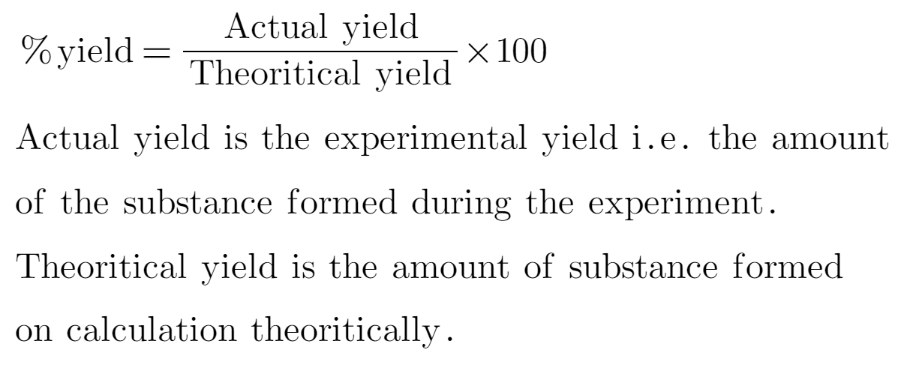The Haber process is used to industrially produce ammonia (NH3). Ammonia is the active ingredient in a variety of household cleaners. The data table below summarizes the experimental quantities of reactants and products collected from a specific batch. N2 (g) + 3 H2 (g) --> 2 NH3 (g) Substance Amount Used N2 10,000 g H2 15,000 g Amount Produced 11,150 g Substance NH3 If the company chemist calculated that 12,163 g of NH3 should be produced, what is the percent yield?
The Haber process is used to industrially produce ammonia (NH3). Ammonia is the active ingredient in a variety of household cleaners. The data table below summarizes the experimental quantities of reactants and products collected from a specific batch. N2 (g) + 3 H2 (g) --> 2 NH3 (g) Substance Amount Used N2 10,000 g H2 15,000 g Amount Produced 11,150 g Substance NH3 If the company chemist calculated that 12,163 g of NH3 should be produced, what is the percent yield?
Chemistry
10th Edition
ISBN:9781305957404
Author:Steven S. Zumdahl, Susan A. Zumdahl, Donald J. DeCoste
Publisher:Steven S. Zumdahl, Susan A. Zumdahl, Donald J. DeCoste
Chapter1: Chemical Foundations
Section: Chapter Questions
Problem 1RQ: Define and explain the differences between the following terms. a. law and theory b. theory and...
Related questions
Question
May you answer and explain this for me please?

Transcribed Image Text:The Haber process is used to industrially produce ammonia (NH3). Ammonia is the
active ingredient in a variety of household cleaners. The data table below
summarizes the experimental quantities of reactants and products collected from a
specific batch.
N2 (g) + 3 H2 (g) --> 2 NH3 (g)
Substance
Amount Used
N2
10,000 g
H2
15,000 g
Amount
Produced
11,150 g
Substance
NH3
If the company chemist calculated that 12,163 g of NH3 should be produced, what is
the percent yield?
Expert Solution
Step 1

Trending now
This is a popular solution!
Step by step
Solved in 2 steps with 2 images

Knowledge Booster
Learn more about
Need a deep-dive on the concept behind this application? Look no further. Learn more about this topic, chemistry and related others by exploring similar questions and additional content below.Recommended textbooks for you

Chemistry
Chemistry
ISBN:
9781305957404
Author:
Steven S. Zumdahl, Susan A. Zumdahl, Donald J. DeCoste
Publisher:
Cengage Learning

Chemistry
Chemistry
ISBN:
9781259911156
Author:
Raymond Chang Dr., Jason Overby Professor
Publisher:
McGraw-Hill Education

Principles of Instrumental Analysis
Chemistry
ISBN:
9781305577213
Author:
Douglas A. Skoog, F. James Holler, Stanley R. Crouch
Publisher:
Cengage Learning

Chemistry
Chemistry
ISBN:
9781305957404
Author:
Steven S. Zumdahl, Susan A. Zumdahl, Donald J. DeCoste
Publisher:
Cengage Learning

Chemistry
Chemistry
ISBN:
9781259911156
Author:
Raymond Chang Dr., Jason Overby Professor
Publisher:
McGraw-Hill Education

Principles of Instrumental Analysis
Chemistry
ISBN:
9781305577213
Author:
Douglas A. Skoog, F. James Holler, Stanley R. Crouch
Publisher:
Cengage Learning

Organic Chemistry
Chemistry
ISBN:
9780078021558
Author:
Janice Gorzynski Smith Dr.
Publisher:
McGraw-Hill Education

Chemistry: Principles and Reactions
Chemistry
ISBN:
9781305079373
Author:
William L. Masterton, Cecile N. Hurley
Publisher:
Cengage Learning

Elementary Principles of Chemical Processes, Bind…
Chemistry
ISBN:
9781118431221
Author:
Richard M. Felder, Ronald W. Rousseau, Lisa G. Bullard
Publisher:
WILEY